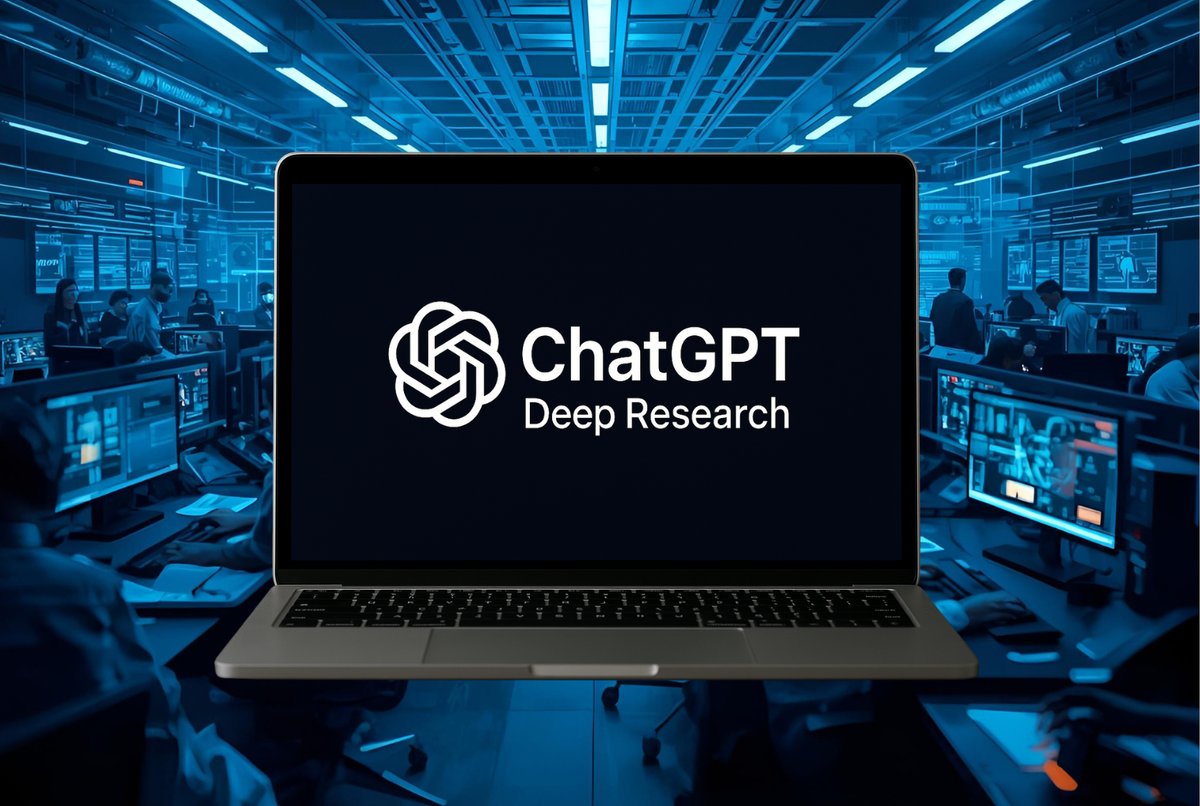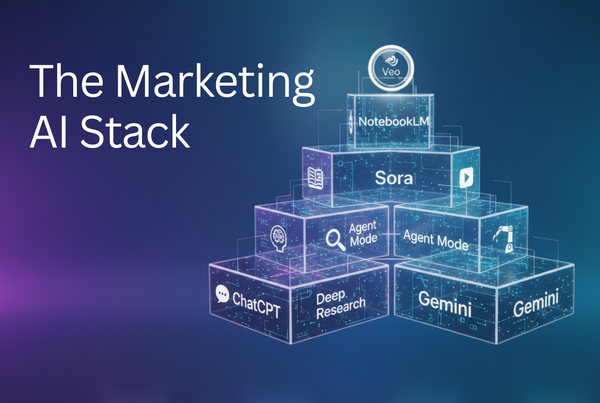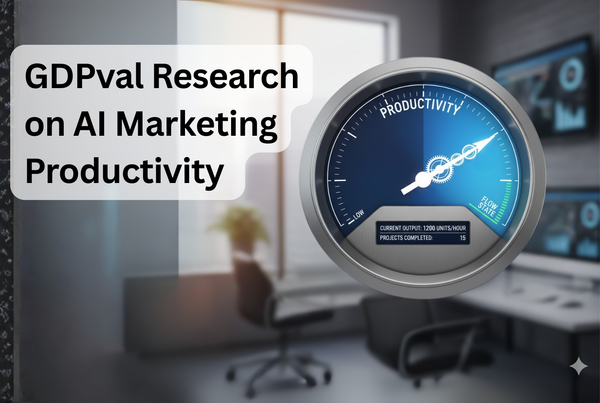ChatGPT Deep Research: What It Is, How to Use It, and When It Matters
Are you using Deep Research yet? Here’s when marketers should use it instead of a quick chat.

Artificial intelligence is evolving from quick-answer chatbots into full-fledged research assistants. OpenAI’s new ChatGPT Deep Research feature is a major step in that direction, and it’s already changing how marketers, analysts, and creators uncover insights online.
If you’ve been hearing about “Deep Research” and wondering what it actually does, how to activate it, and whether other AI tools can do the same, here’s a complete breakdown of what it means for your work.
What Is ChatGPT Deep Research?
ChatGPT’s Deep Research mode is best understood as a kind of autonomous analyst. Instead of answering your question in one pass, it actually builds a plan: breaking your prompt into smaller tasks, researching each one, cross-checking information, and then pulling everything together into a structured, evidence-based report.
OpenAI designed Deep Research to do what human researchers do — gather, validate, compare, and synthesize information. It browses the web in real time, reviews multiple sources, evaluates credibility, and provides citations so you can see where its conclusions come from. If you upload your own documents or context, it can even integrate that material into its findings.
For marketers and business strategists, this turns ChatGPT into something far more powerful than a writing assistant. You can brief it to analyze an industry, summarize emerging trends, or benchmark competitors, and it will go out and do the investigative work.
When to Use Deep Research, and When to Stick to Standard Mode
Deep Research shines when your question demands depth, evidence, or synthesis. It’s ideal for use cases like analyzing market dynamics, identifying industry trends, conducting competitor research, or building whitepapers that require credible sourcing. If you’re creating thought leadership content or strategy materials that need to hold up to scrutiny, Deep Research gives you the transparency and rigor you need.
On the other hand, standard ChatGPT is still better for quick answers, brainstorming sessions, and creative drafting. If you just need to check a fact, summarize an article, or develop a few ideas on the fly, the standard mode’s speed and conversational flexibility make it the better choice. Deep Research takes time — it’s meant for accuracy and structure, not instant response.
A simple rule helps decide: if you’d normally spend hours researching and writing a report yourself, use Deep Research. If you’d normally ask a colleague a quick question, use standard ChatGPT.
Here are 3 practical marketing examples of this:
1. Competitive Landscape Analysis
When you need to understand how your competitors are positioning themselves — pricing, messaging, content strategy, social presence, ad spend trends, and partnerships — Deep Research is ideal.
In standard mode, ChatGPT can summarize or brainstorm based on its general knowledge, but Deep Research actually goes out to collect real-time data from competitors’ websites, recent press releases, industry articles, and even social mentions. It then cross-checks and synthesizes that information into a structured report with sources.
Example Prompt:
“Conduct a competitive analysis of three leading B2B SaaS marketing platforms — HubSpot, Marketo, and ActiveCampaign — including pricing models, messaging tone, recent product updates, and go-to-market strategies.”
You’ll get current, cited insights rather than generalized summaries, making it useful for positioning work, investor decks, and campaign strategy.
2. Emerging Trend or Market Shift Reports
If you’re creating thought leadership content — like “The Future of Generative AI in Marketing” or “Emerging Consumer Behaviors in 2025” — Deep Research provides depth that a standard model can’t.
It doesn’t just brainstorm trends; it finds, compares, and validates them across multiple current sources, analyzing what experts, publications, and data providers are saying right now.
Example Prompt:
“Research emerging trends shaping digital advertising in 2025, focusing on privacy-first ad tech, contextual targeting, and AI automation. Identify sources, summarize expert perspectives, and highlight potential risks and opportunities.”
It produces a fact-checked foundation for authoritative content, complete with references you can use in blog posts, whitepapers, or webinars. You can even ask it to format the output as a publish-ready article outline.
3. Customer Persona or Audience Insight Development
When building or refining audience personas, marketers need data that’s often fragmented — reviews, discussion forums, survey results, social trends, and demographic patterns. Deep Research can aggregate these sources into an evidence-based narrative about who your audience is and what motivates them.
Example Prompt:
“Research the online behavior and motivations of small business owners using AI tools for marketing. Summarize common pain points, buying triggers, and attitudes toward automation, using recent discussions, surveys, and reports.”
It uses live sources to identify emerging sentiment and patterns, rather than guessing based on outdated training data. You get a more accurate, timely, and nuanced understanding of your audience — ideal for campaign planning or messaging refreshes.
How to Activate Deep Research
Deep Research is rolling out across ChatGPT’s paid and free plans, though the full capabilities depend on your subscription level. It’s available to Plus, Pro, Team, Enterprise, and Education users, with a limited “lightweight” version now open to free users as well.
To use it, start by checking your settings in ChatGPT. Under Settings → Tools, make sure “Research” or “Deep Research” is enabled. When composing a new chat, select “Deep Research” or “Agent Mode” from the mode menu before you begin.
Then, write your prompt as if you’re briefing an analyst — describe what you want to know, why it matters, and what kind of outcome you expect. The more detail you provide, the better the system performs. Deep Research runs longer than standard mode, often between five and thirty minutes depending on complexity, as it conducts its multi-step process. Once it’s done, you’ll receive a structured report with sources, summaries, and insights that are ready to review or refine.
Each plan comes with a monthly quota: Pro users get roughly 250 Deep Research tasks per month, while Plus, Team, and Enterprise accounts typically include about 25. When you reach your limit, ChatGPT automatically switches to the lightweight version, which still performs real-time research but with less depth.
Deep Research in Other AI Tools
OpenAI isn’t the only company working toward agent-style, research-capable AI. Several competitors are pursuing similar directions, though with different approaches.
- Perplexity AI has a “Deep Research” or “Pro Search” mode that focuses on live-source answers, providing a balance between speed and reliability.
- Claude, from Anthropic, excels at long-form reasoning and handling large documents, but doesn’t browse the web as dynamically.
- Google Gemini integrates directly with Google Search and other services, offering a more familiar experience but with less transparency about how it sources its data.
Beyond those, a wave of niche AI tools — such as Elicit, Consensus, and other academic-focused systems — are building specialized capabilities for literature reviews, data synthesis, and scientific analysis. These can be powerful but tend to serve narrower audiences.
ChatGPT’s Deep Research stands out for its integration: it combines reasoning, browsing, document handling, and conversation all in one place. That makes it uniquely flexible for marketing and business use, where users need depth and agility in the same workflow.





